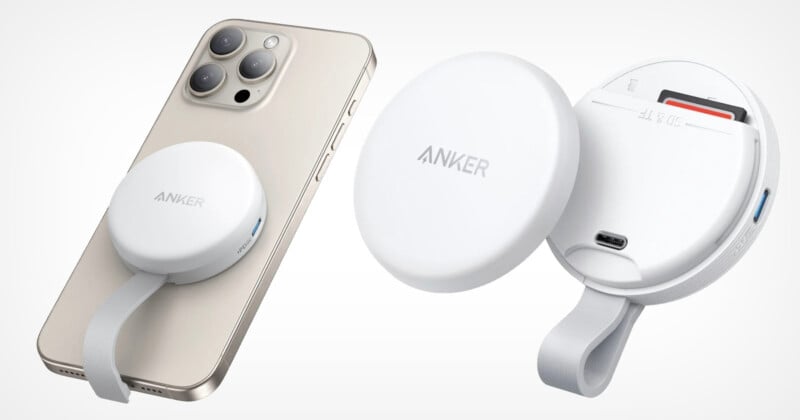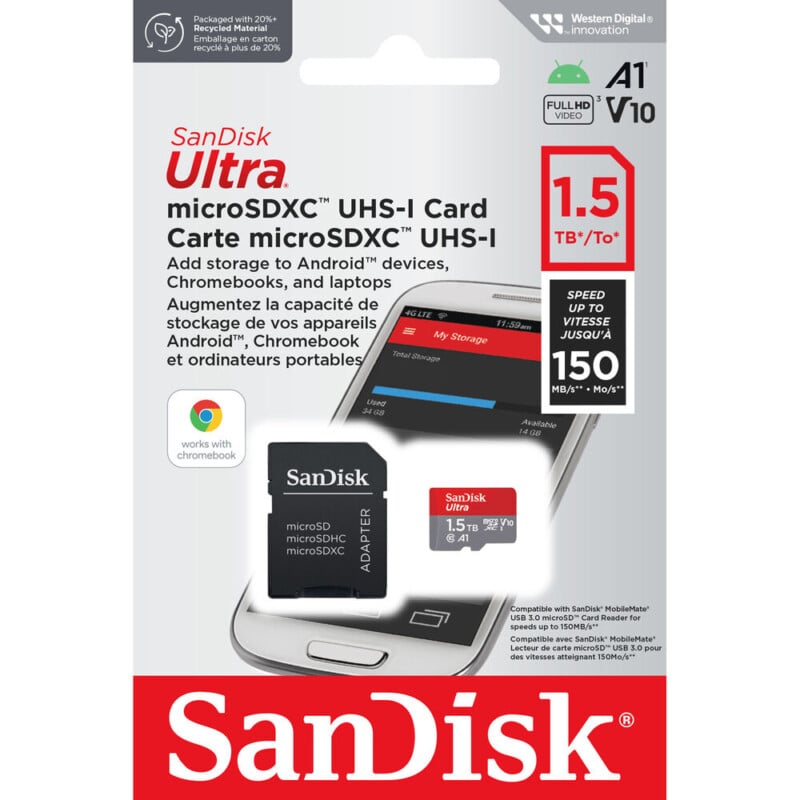 Anker MagGo USB-C Adapter | Anker
Anker MagGo USB-C Adapter | AnkerThe iPhone 15 Pro series and the new iPhone 16 Pro series offer really gorgeous video capture capability, especially thanks to the addition of ProRes Log. The standard video capture suffers from oversharpening, but the log footage doesn’t. But the log footage takes up a lot of storage, which means some creators might be tempted to use SD cards.
Many mobile filmmakers are looking for cheap, easy ways to get external storage. Since most of them have standalone cameras and therefore, SD cards, many will want to repurpose them for use with the iPhone, if possible. Even better, many hope to be able to unlock ProRes Log capture to an SD, since that would make managing footage a lot easier. Higher frame rate 4K ProRes Log footage requires an external SSD to use, making an external SD option even more exciting.
Last year, YouTuber David Altizer shared that he was able to capture 4K ProRes Log at 30 and 60 frames per second from the iPhone to an attached SD card. At the time, it seemed like a fantastic “hack” to get lots of additional, cheap storage for iPhone video capture. However, this video was published before Apple fixed a bug that was not showing users when the iPhone was dropping frames — because it was and still will.
PetaPixel today confirmed that the iPhone can technically shoot 4K at 30 frames per second (FPS) in ProRes Log to a UHS-II SD card, but attempting to choose a higher frame rate would guarantee dropped frames. That is to say, the iPhone allowed the connection to happen at 30 FPS but that doesn’t mean it will work very well. SD card transfer speeds are extremely fickle even if a quick speed test from an attached computer, or in this case iPhone, shows a spike above 200 MB/s. The SD Association doesn’t provide a rating above V90 (which denotes video speed 90 MB/s sustained) but many card manufacturers will claim very high read and write speeds even if one, those speeds are never realized in the real-world and two, are only peaks that quickly drop during long record times.
While an SD card can reach high 200 MB/s write speeds, it can’t sustain it. None of them can. They all drop significantly and during an intensive load, will oscillate that speed — often wildly.
Apple ProRes Log is an extremely heavy file that is equal in size to ProRes 422 HQ. Any external storage device attached to an iPhone — both last year’s iPhone 15 Pro series and this year’s iPhone 16 Pro series — trying to capture ProRes Log need a write speed of at least 110 MB/s for 4K at 24 and 30 FPS, 220 MB/s to cover 4K at 60 FPS, and in the case of the iPhone 16 Pro, at least 440 MB/s for 4K at 120 FPS.
So while an SD card will give a handshake to the iPhone shooting 4Kp30 at first blush, PetaPixel‘s video experts do not believe that the card will be capable of stable recording for very long. If you shoot with an SD card attached for longer than a few seconds, you can expect it to start dropping frames no matter what frame rate you choose. Worse, you probably won’t see those frame drops in real-time, only when you go to playback will you notice them and at that point, the footage is pretty much unrecoverable.
There are only a few SSDs that are confirmed to not drop frames when using ProRes Log 4K at higher frame rates: the LaCie portable SSD 2TB External Solid State Drive, the Samsung T9, and the OWC Elektron. While other SSDs may work, some are still dropping frames, which should tell you all you need to know about how reliable a much slower SD card would do when tasked with those same files.
The Anker MagGo USB-C Adapter
This past week, Anker announced the MagGo USB-C 3-in-1 adapter which promises to allow better video capture workflows on iPhone thanks to SD card support. While it can be used for what Anker advertises — in the strictest sense — we don’t recommend it for any video tasks where a filmmaker wants to capture ProRes Log.
Post by @0oyukao0
View on Threads
Anker says that its adapter enables simultaneous data syncing and charging at a 42.5W max output when connected to a power source, “making it ideal for multitasking professionals.” It also says that it can provide a stable connection to an SD or TF (TF, or TransFlash, is another name for microSD) at 312 MB/s speeds.
The MagGo isn’t an SD card, it’s a reader, so all of the hard numbers stated there are true. However, the reader is not the bottleneck — the card is. It doesn’t matter if the reader can transfer that fast if no SD card can keep up. On that note, don’t be taken in by any SD Express or SD 8.0 memory card that promise much higher transfer speeds — those won’t work in this reader either.
So while what Anker is advertising isn’t untrue, it is misleading. The use of the word “professional” in its advertising along with that high MB/s transfer speed promise makes it appear to many that this will be able to handle the rigors of “professional” smartphone video capture. That doesn’t explicitly say 4K ProRes Log capture, but given that professionals shoot with the iPhone all the time and the most recent ones are all doing so with ProRes Log, it gives the appearance of providing an experience that is on par with what those people create when it can’t.
That’s a shame because this product isn’t bad — it’s still quite useful for those who would like their iPhone to mimic the experience of a standalone camera. Shooting photos and non-log video to an SD card is a great way to use old memory and therefore save money and reduce waste. It’s just a shame that in its bid to attract sales, Anker went too far down a misleading path.
We’re not saying don’t buy the Anker MagGo USB-C Adapter but if you do, know the limitations.
Anker Isn’t The Only One to Blame
Sure, Anker drank a little too deeply from the marketing cup, but it’s not the only one to blame here. Instead of forcing manufacturers to only state sustained read and write speeds on cards, the SD Association (and the Compact Flash Association does this, too) allows card makers to publish in big bold letters the lab-tested peak speeds while hiding the actual real-world performance speeds behind confusing logos like U3, A4, and V90. Sometimes, manufacturers don’t even state if it’s the read or write speeds that those big numbers represent (high write performance — which is what is needed for capture — is much harder to manufacture than high read performance). The average photographer doesn’t know what all these symbols mean let alone the average iPhone content creator. All they see are those big shiny peak numbers and they hit that buy button.
 This card looks like a deal until you either know what those symbols mean or read the fine print. | SanDisk
This card looks like a deal until you either know what those symbols mean or read the fine print. | SanDiskIt’s why SanDisk prints in big letters “speed up to 150 MB/s” on the above packaging, even though that refers to best-case read speeds. The truth of that card is that it caps out at 10 MB/s write speeds — it is a truly miserably slow card. But the average consumer will see the $100 price, huge 1.5TB capacity, and 150 MB/s second and think, “Hot dog, what a deal.”
Not every card maker does this and some even print only sustained performance on the card, not peak performance, but memory is still a convoluted and misleading space that really needs cleaning up.



/cdn.vox-cdn.com/uploads/chorus_asset/file/25242409/20230608_Palworld_Screenshot_02.png)



 English (US) ·
English (US) ·